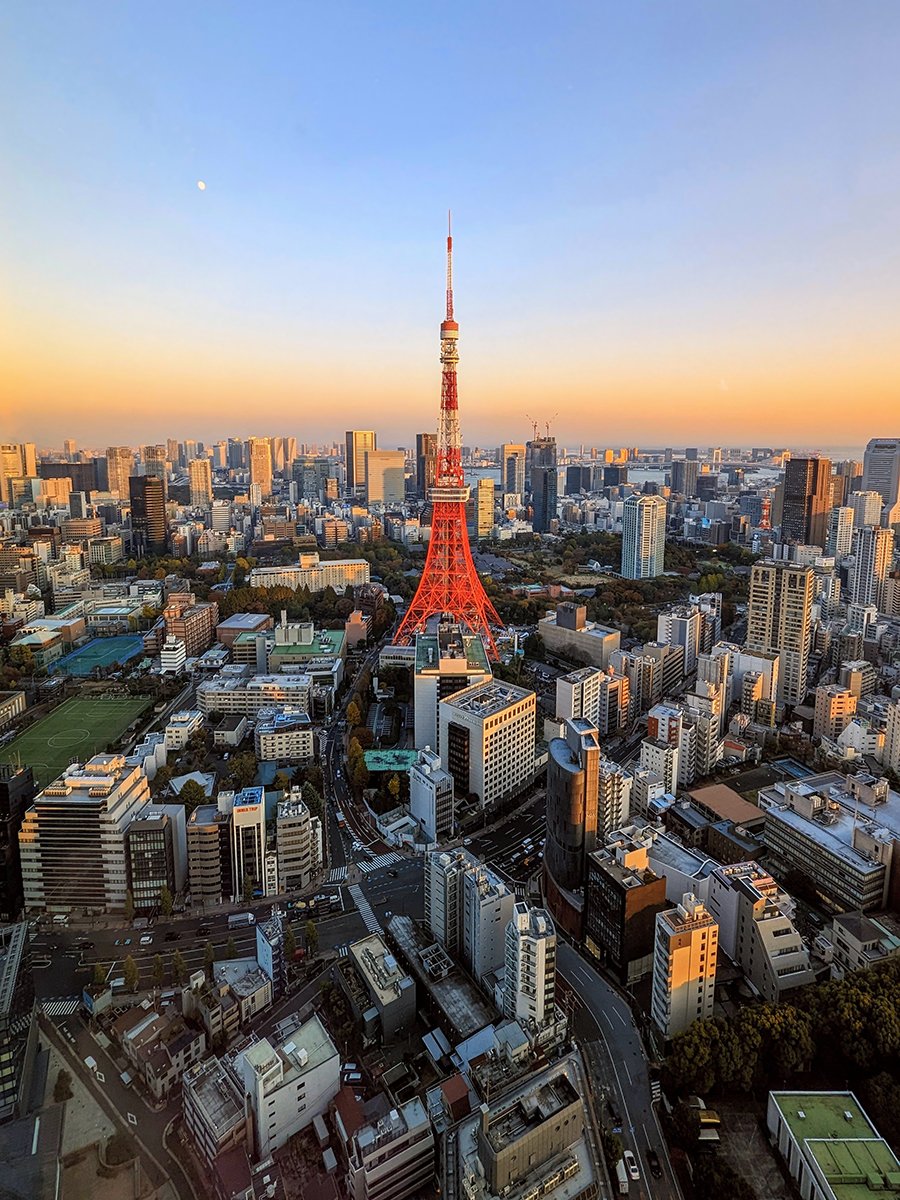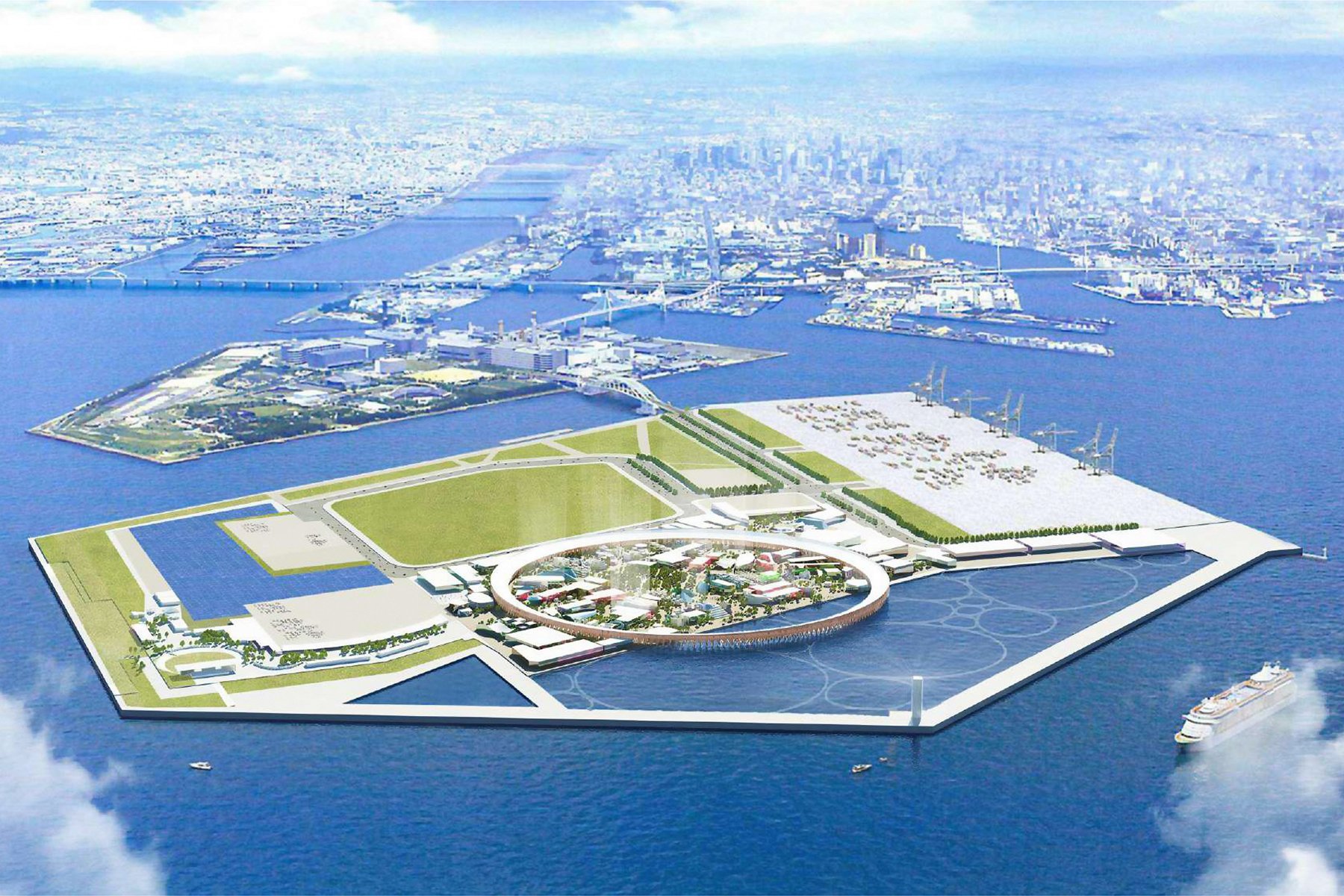First Look: Azabudai Hills

Japan’s tallest building is finally open.
Cover photo: Sunset view of Azabudai Hills Mori JP Tower from Tokyo Tower, Minato City, Tokyo, Japan (2023). Photo by Danny With Love.
Intro
A project over thirty years in the making, the Azabudai Hills (麻布台ヒルズ) complex opened to the public on Friday, November 24th. With a height of 330 meters (1083 feet), Azabudai Hills Mori JP Tower is now the tallest building in Japan, surpassing previous record-holder Abeno Harukas in Osaka by 30 meters (99 feet).
The new complex promises to be popular with locals and tourists alike, offering world-class eateries, free views over Tokyo, and the forthcoming teamLab Borderless digital art museum.
Construction began in 2019. With a total floor area of 861,700 square meters (9275,262 feet), the 640 billion yen (4.3 billion USD) project is the largest development yet by Mori Building Co. Since its founding in 1959, Japan’s leading property management firm has transformed Minato City, home to foreign embassies and iconic Tokyo Tower. Azabudai Hills replaces a neighborhood of condemned houses dating to the post-war period. The area is served by Kamiyacho Station (Hibiya Line) and Roppongi-Itchome Station (Nanboku Line).
According to Mori Building Co. President and CEO Shingo Tsuji (辻 慎吾), the mixed-use “city-within-a-city” complex aims to raise the “international competitiveness” of Tokyo. Tenants include the British School in Tokyo, the Keio University Center for Preventative Medicine, and the Tokyo Venture Capital Hub. Two of the three towers are dedicated to private residences and hotel rooms, with one still under construction.
While only about 90 of the total 150 businesses were open for the inaugural weekend, large crowds gathered for a first look. Foreign performers were hired to commemorate the event, including the Living Statue Company from Britain, as well as Celestroï and Macadam Piano from France. The development is expected to be fully open by spring. Please read on for more details, criticism, and my final thoughts.
Architecture
The project’s three skyscrapers, including Azabudai Hills Mori JP Tower and the two residential buildings, were designed by US-based Pelli Clarke & Partners, best known for Kuala Lumpur’s Petronas Twin Towers. The rest of the development was envisioned by London-headquartered Heatherwick Studio, behind Little Island and the indefinitely-closed Vessel in New York City.
Inspired by nature, both teams made extensive use of curved, organic forms. In total, the development boasts 24,000 square meters (258,334 feet) of public green space with some 320 types of plants. The main Sakura Asa street is set to be covered in a variety of cherry blossoms in spring.
The titular cofounder of Pelli Clarke & Partners, Fred Clarke notes the main tower’s “flower-like, four-petaled shape, opening up to the heavens” in poetic embrace. The interiors are so rounded, it feels like walking through an iPhone.
Heatherwick Studio found inspiration in pergolas. The team’s cascading terraces are extraordinary, almost verging on alien. Walking the winding road through the garden plazas is a joy. Inside, fanning arches remind of art deco patterns. Heatherwick also designed “The Cloud,” a swirling canopy by the main tower which will serve as an outdoor terrace and event space.
Art
Most notably, Azabudai Hills will house the second edition of Borderless, the sensational digital art museum by Japanese artist collective teamLab. With over two million visitors in 2019, the original site in Odaiba was certified by Guinness World Records as the “Most Visited Museum” by a single group or artist. The highly-anticipated museum is set to open early February.
Additionally, the complex includes the Azabudai Hills Gallery, Shop, and Cafe, Shueisha Manga Art Heritage exhibition space, as well as Gallery & Restaurant Butaiura (“Behind The Scenes”) which will host contemporary art events, shows, and performances. Pace will open an outpost in spring.
Public sculptures by Japanese artist Yoshitomo Nara (奈良美智), Chinese artist Wang Zhan (展望), and Icelandic-Danish artist Olafur Eliasson also dot the site.
Shops & Restaurants
There are many exciting shops throughout the Azabudai Hills, including popular and historic brands. The complex features the first Tokyo locations for Kyoto-based companies, % Arabica and bookstore Ogaki. It’s home to the first brick-and-mortar shop by dessert maker Mr. Cheesecake, and Michelin-starred Florilège will reopen here as well. Azabudai Hills will host a Christmas market in December.
Most of the tower restaurants are located on the third floor. It was almost impossible to find seating without a reservation! Additional highlights below. Full list here.
Prunier (French caviar house, dating back to 1872)
Suzukake (Fukuoka-based contemporary wagashi, dating to 1923)
Nicolai Bergmann (flower store by the Tokyo-based Danish flower artist)
Sembikiya (Japan’s oldest fruits parlor, dating to 1834)
Criticism
I first learned of the Azabudai Hills when I noticed the looming main tower from Roppongi Hills — Mori’s landmark 2003 development — over a year ago. Just three meters (10 feet) shorter than Tokyo Tower and unusually wide, the Azabudai Hills Mori JP Tower now overwhelms the skyline.
Furthermore, it’s a shame that such titanic projects are not entrusted to Japanese architects, reflecting Mori’s international preference instead. Professor of urban engineering at Tokyo City University, Masaaki Uto (宇都 正哲) says the complex offers a new “litmus test” for Tokyo’s ability to attract foreign companies post-COVID. The development’s opening comes at an opportune moment for Japan, amidst growing US-China tensions.
Even at first glance, Mori’s goals to create an economic catalyst for Greater Tokyo and a “city-within-a-city” appear disjointed. The developer’s past projects have been criticized for gentrification and self-isolation. “These developments try to enclose … they’re not intending to connect to the adjacent area,” argues local architect Norihiko Dan (團 紀彦).
Residences here are expected to be some of the most expensive in the nation. With the decline of the yen, Japan’s real wages have continued to fall, while foreign money has flooded Tokyo, further encouraged by low interest rates. Speculative investments in real-estate are part of a global trend inflating housing prices and pushing out locals. I can’t help but wonder if Azabudai Hills will go the way of New York’s Hudson Yards, the largest private real-estate development in US history which now sits half-empty.
Having watched private equity firms hollow out industries and cities in the US for the past decade, I’m especially skeptical of the Tokyo Venture Capital Hub. VC has few ideas beside financialization — the prioritization of financial instruments over productive capacity to generate short-term profits — resulting in low wages, job loss, and growing income inequality. “Left unregulated, excessive financialization can erode the core architecture and health of an economy,” warns Ulrike Schaede, professor of Japanese business at the University of California.
I don’t mean to overstate the influence of one development on the world’s largest metropolis, but I imagine many people will be watching Azabudai Hills.
Final Thoughts
Despite my concerns, I enjoyed my day at Azabudai Hills. It’s easy to spend a lot of time — and money — here; I’m especially happy that the garden, sculptures, and “Sky Lobby” are free to enjoy. I’m less confident about the development’s transformative effects. Azabudai Hills is simply Tokyo’s latest playground for the rich, great news for those who can afford to play.
2024 Opening Schedule
Azabudai Hills Market (gourmet food) JANUARY
teamLab Borderless digital art museum FEBRUARY
Janu Tokyo Hotel FEBRUARY
Luxury fashion at Sakura Asa FEBRUARY/MARCH
UPDATE: As of April 17th, 2024, the Sky Lobby is closed to the general public.























